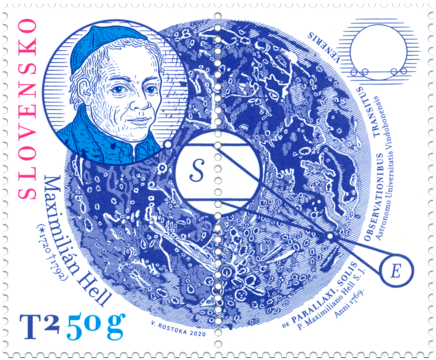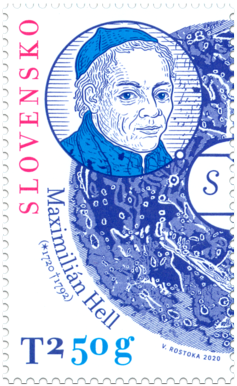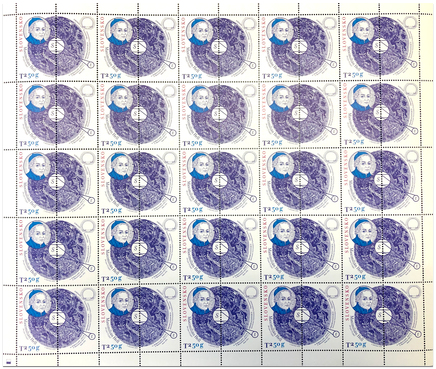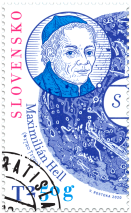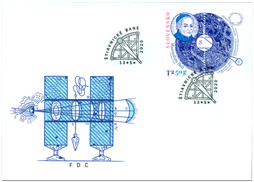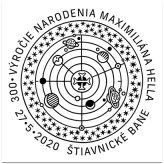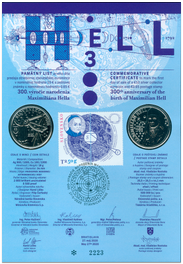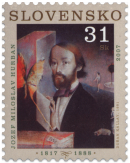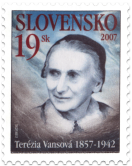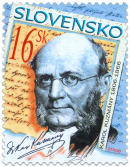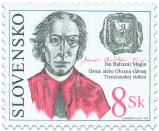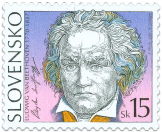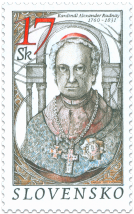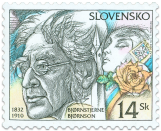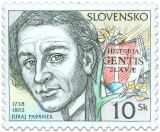712 Date of issue
13.05.2020 Face value
0.90 € Sell price
0.90 €
Maximilian Hell was an important 18th-century astronomer. He was born on 15th May 1720 in the municipality of Štiavnicke Bane, where he attended primary school. Subsequently, he studied at the grammar school in Banská Bystrica. After completing his studies, he applied for admission to the Society of Jesus. In 1740, Hell took monastic vows and left for Vienna to study history, theology and philosophy. After his ordination in 1750, he started to teach at the Jesuit grammar school in Banská Bystrica. He completed his university studies in Vienna in 1752. He contributed to the construction of observatories at Trnava, Cluj-Napoca, Buda and Eger. In 1755, he was appointed as Director of the Vienna Observatory and held this position until his death. The greatest adventure of his life was an expedition to the northern artic island Vardø, where he observed the transit of Venus across the Sun. The expedition was a huge success. Hell calculated the solar parallax and the distance between the Sun and the Earth. He was also a pioneer of research into the aurora borealis and the Earth’s magnetic field. Hell described the natural conditions of Norway, Finland and the North Sea, focusing on the geological composition, fauna and flora, the reasons for sea luminescence and low tides. His publication of astronomical almanacs, the first in 1757, is also remarkable. Maximilián Hell was a member of many learned societies based in Paris, Stockholm, Bologna, Copenhagen, Göttingen, Trondheim and London. He cooperated with the English Royal Society and received the Order of the English Government for scientific work in 1790. The 250th anniversary of his birthday was included in the UNESCO calendar of anniversaries of eminent personalities. There are several objects and institutions that bear his name: a Moon crater, the minor planet 3727, the observatory and planetarium in Žiar nad Hronom and the primary school in Štiavnicke Bane. He died on 14th April 1792 and was buried in Maria Enzersdorf near Vienna.
The motive of the postage stamp is a portrait of M. Hell taken from engraving of János Blaschke (1770 − 1822) on the background of a map of the Moon published in 1764 in the M. Hell’s Astronomical yearbook. The coupon is devoted to Hell’s observations of transition Venus before Sun disk (De Transit Veneris ante discum Solis, 1770) and the calculation of the Earth distance from the Sun (De parallaxi Solis, 1773). The motive of the FDC overprint is a cross-section of the telescope from the quadrant during the observation of Venus on the Norwegian island Vardø in 1768 and cancellation design consists of astronomical quadrant used on astronomical observation purposes.
Mária Beneová, MAXIMILIAN HELL Civic Association
Show less
Similar products
408 Date of issue
26.10.2007
405 Date of issue
01.09.2007
389 Date of issue
07.02.2007
368 Date of issue
03.02.2006
350 Date of issue
10.03.2005
308 Date of issue
17.09.2003
291 Date of issue
24.04.2003
285 Date of issue
05.02.2003
270 Date of issue
04.07.2002
255 Date of issue
15.01.2002
254 Date of issue
15.01.2002
246 Date of issue
18.09.2001
© 2024 POFIS - Postal philatelic service. All rights reserved

